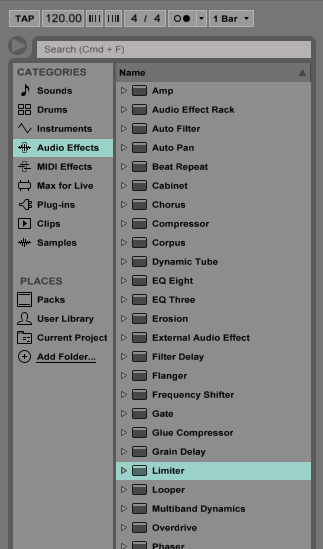
Live doesn’t ‘print’ the audio effects used unless you route to another track or freeze the track.
#HOW TO GET EQ 8 IN ABLETON LIVE LITE SOFTWARE#
One of the prime benefits of working with software in this way is the potential to re-amp – to replace the amps and effects used at the time of recording with different ones later. It’s become a habit to always use some kind of tape compressor plug-in on guitar tracks, it just immediately makes them feel more organic. In front, it’ll sound like a reverb pedal on the floor in front of an amp, after, it’ll sound more like you’re trying to build a room sound. Reverb could go before or after your amp/cab, depending on what kind of result you want. When you’re creating chains with amps, cabs, and effects, remember that they will behave differently depending on the order, so try dragging them around to hear what changes.

For deeper texture, we can use that in a chain with the Live audio effects as needed for the project. It’s also MIDI controllable and the presets are compatible with the Helix hardware as well. The only additional guitar-specific plug-in that we use here is Line 6’s Helix Native, which sounds good, has a huge range of amps, cabs, and pedals, and allows the use of two chains at once. Let’s also put in a word for the Limiter audio effect, which is essential for optimising volume levels and reducing the likelihood of distortion (the unwanted digital kind). Once again, experimentation is required and it’s usually an idea to load the defaults for Pedal and Echo and start from there. Live 10 took a giant step with the addition of the Tuner, Pedal, and Echo effects (the Tuner is technically an effect, too) we have used all of these in real-world production situations. We don’t use these presets, but they’re good illustrations of what’s doable, especially when you look at the preconfigured macro controls and their labelling. In the walkthrough, we build a guitar rig from scratch, but there are plenty of presets to explore, for Amp and Cabinet individually, but also filed as racks under Amp Simulation in the Audio Effect Racks section of the Browser. It’s a small thing, but it was such a relief when Live got a tuner (incidentally, valuable for tuning samples as well)! This used to be the weak link with amp-modelling software and hardware. It’s shocking how different they can sound – it’s not like using a guitar amp.


When working on guitar sounds, perhaps more than any other, it’s important to alternate monitoring with headphones and monitors. If you’re likely to have a lot of music gear connected, then Live 10 allows you go into Preferences and name each audio input and output, which can make it faster to set up. You can use any audio interface that has an instrument input, although not all are created equal – you want a clean signal with plenty of gain, otherwise you’ll have to add external boosters which is kind of against the point.


 0 kommentar(er)
0 kommentar(er)
